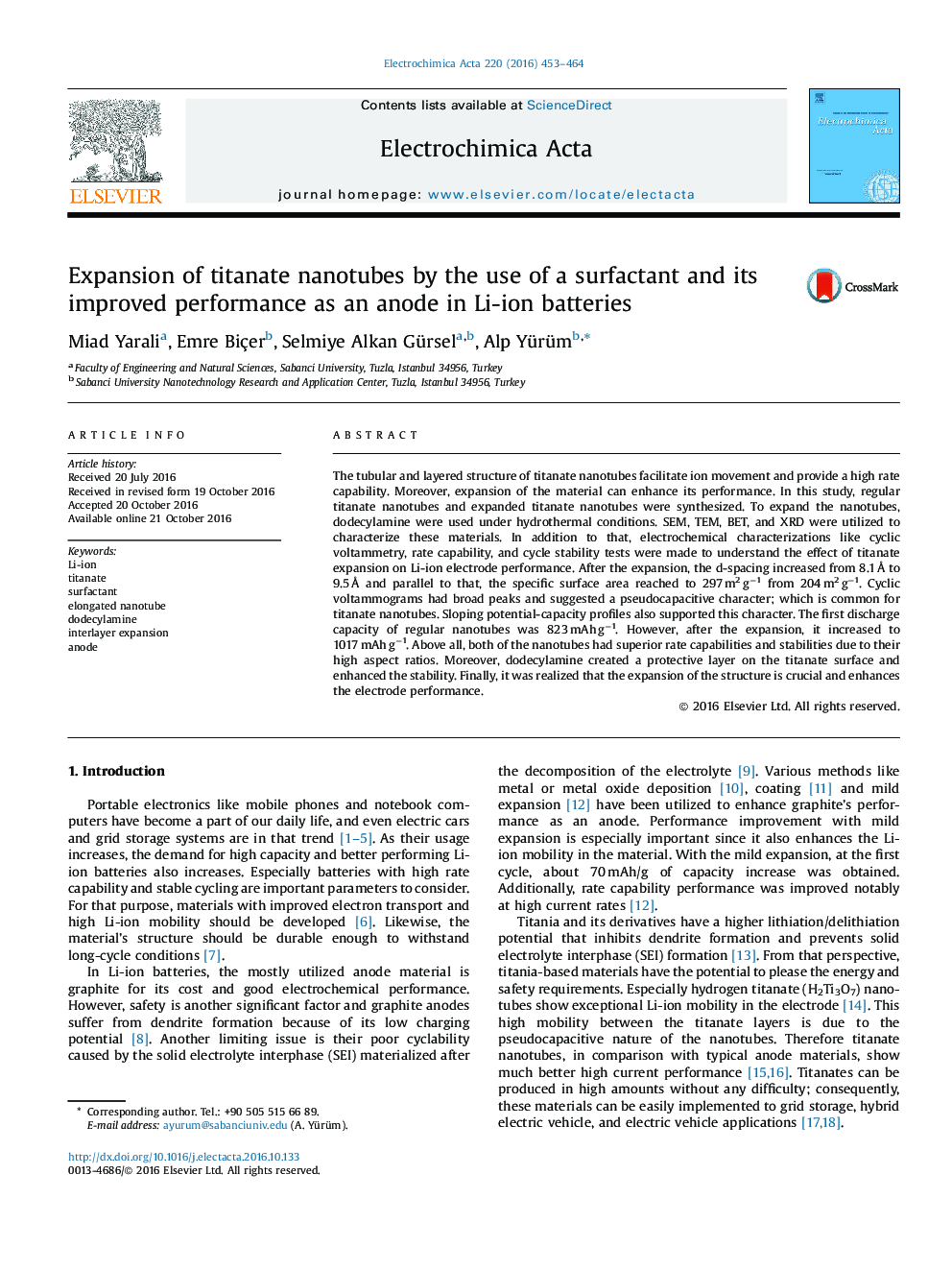| Article ID | Journal | Published Year | Pages | File Type |
|---|---|---|---|---|
| 6472387 | Electrochimica Acta | 2016 | 12 Pages |
The tubular and layered structure of titanate nanotubes facilitate ion movement and provide a high rate capability. Moreover, expansion of the material can enhance its performance. In this study, regular titanate nanotubes and expanded titanate nanotubes were synthesized. To expand the nanotubes, dodecylamine were used under hydrothermal conditions. SEM, TEM, BET, and XRD were utilized to characterize these materials. In addition to that, electrochemical characterizations like cyclic voltammetry, rate capability, and cycle stability tests were made to understand the effect of titanate expansion on Li-ion electrode performance. After the expansion, the d-spacing increased from 8.1 à to 9.5 à and parallel to that, the specific surface area reached to 297 m2 gâ1 from 204 m2 gâ1. Cyclic voltammograms had broad peaks and suggested a pseudocapacitive character; which is common for titanate nanotubes. Sloping potential-capacity profiles also supported this character. The first discharge capacity of regular nanotubes was 823 mAh gâ1. However, after the expansion, it increased to 1017 mAh gâ1. Above all, both of the nanotubes had superior rate capabilities and stabilities due to their high aspect ratios. Moreover, dodecylamine created a protective layer on the titanate surface and enhanced the stability. Finally, it was realized that the expansion of the structure is crucial and enhances the electrode performance.
Graphical abstractDownload high-res image (229KB)Download full-size image
